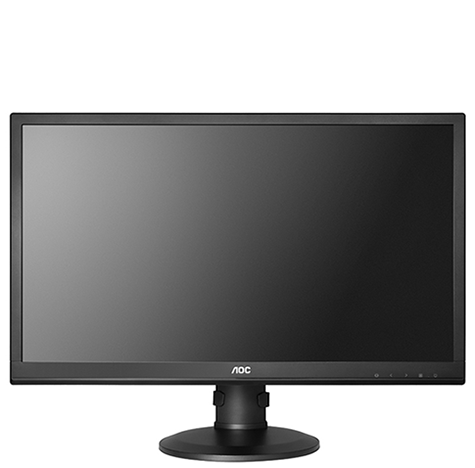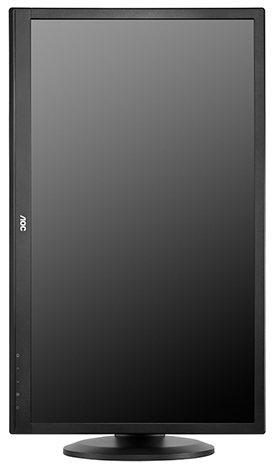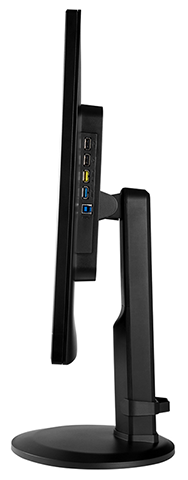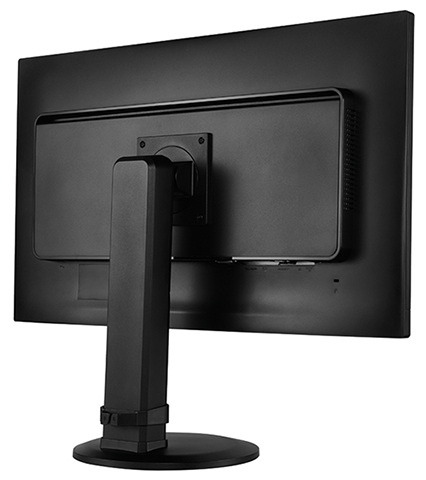4K for £499
4K monitors are wonderful things. So much so that once you've become accustomed to the eye-popping level of detail, you find it hard to adjust to lower-res panels, and good ol' 1080p feels woeful in comparison.
Often dubbed Ultra HD, these 3,840x2,160 displays can deliver incredible picture quality and the lofty resolution results in greater desktop real estate, making such screens ideal for creative professionals or ultra-high-end gaming. For these reasons, many of you have cited 4K as the trigger point for your next PC build.
But in order for that to happen, 4K monitors need to become more accessible to mainstream audiences. The initial batch arrived with price tags well in excess of £2,000 and only now are we starting to see sensible alternatives filter through to retail. One example is the AOC U2868PQU, a £499 solution that we've been able to take for a spin.
Now £499 is hardly loose change, but at first glance, AOC's 4K panel evidently isn't styled to look like a premium option. The all-black chassis is mostly plastic, as is a lot of the stand, cable management is nothing more than an attachable clip, and there aren't any fancy design elements: it looks like a bog-standard monitor. It's only in use that you realise it's anything but.
Versatile Design
Measuring 659mm across and 561mm high, the U2868PQU incorporates a sizeable 28in panel and, much to our satisfaction, it favours function over form. There are no reflective elements, the chassis isn't a fingerprint magnet, the bezel is reasonably small and the stand feels suitably sturdy.
Better still, it's very versatile. The display offers support for 130mm height adjustment, tilt from -5º to +24º, as well as the ability to swivel from side to side. Oh, and you can quite easily rotate the panel to portrait mode, too. Heck, there's even a Vesa mount on the back, so AOC thankfully hasn't missed a trick when it comes to flexibility.
It feels strange harping on about a flexible stand on a 4K panel, yet this is something that's often overlooked and for many it's a critical feature. Buyers in the market for a 4K solution should note that rival options such as the Samsung U28D590D might be more attractive in appearance but lack height adjustment and Vesa compatibility.
Panel Technology
There's another reason why precise positioning is important on more-affordable 4K screens such as the AOC - they tend to use lower-cost TN (twisted nematic) panels that can't match the viewing angles of premium IPS (in-plane switching) solutions. That said, this isn't your run-of-the-mill TN panel, as it boasts over a billion colours, a modest 1,000:1 contrast ratio, a 300 cd/m² brightness rating and a 1ms grey-to-grey response time.
What makes the U2868PQU particularly interesting, however, is the fact that it can handle 4K resolutions via DisplayPort at 60Hz using Single-Stream Transport (SST). Readers who have been keeping a close eye on 4K developments will know that earlier displays utilised Multi-Stream Transport (MST), forcing the initial batch of 4K panels to be recognised by the OS as two, or more, displays tiled together. Such a setup was hardly ideal, and the new scaler technology built into the AOC panel is a marked improvement - hook it up via DisplayPort and it's instantly recognised as a single 3,840x2,160 panel with a 60Hz refresh rate.
DisplayPort 1.2, then, is the connection of choice, however HDMI 1.4 (with MHL compliance), DVI and VGA inputs are also provided, though do be aware that using either HDMI or DVI limits refresh to 30Hz. A 3.5mm audio jack is provided for the integrated 3W stereo speakers and there's also an integrated four-port USB hub, with two connections offering SuperSpeed 3.0 capability.













